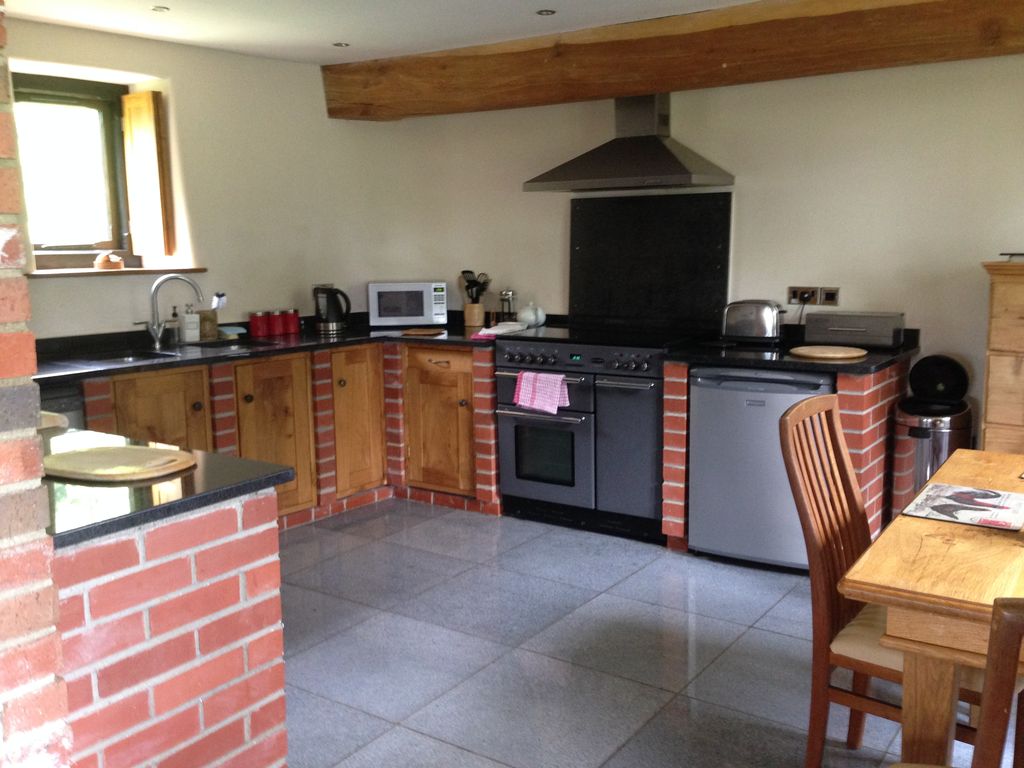 |
| In the rain, Tom was using the wheelbarrow to bring the wood to Pond Cottage. |
Fascinating Fact of the Day about Devon, Cornwall: From this site:
Devon has the world’s country’s bakery
“I know what you’re thinking. The clue’s in the name. But like they don’t get cream teas right, our Cornish cousins didn’t invent the pasty either. The earliest recorded recipe for the pasty was discovered in 2006 and dated back 500 years. Yup, it’s in a Devon book. So, you can go to Europe all you like and get them to say Cornish Pasties have to be made in Cornwall. Doesn’t make it so. If you like, we can also prove we invented Cornish Piskies, the Cornish language, and the writer and director Joe Cornish.“
The past two nights, I wore socks to bed. It makes us wonder how cold we’ll be when we get to Minnesota in November, with the winter season rolling in. We recall a blizzard on Halloween in 1991 as described here and below:
 |
| The woodshed…a building on this 500-year-old farm. |
“In eastern Minnesota, the Halloween Blizzard shattered many of the previous October snowfall records. The 8.2 inches that fell in the Twin Cities on October 31 was more snow than had ever been recorded in any October in its recorded history. Over the next two days, the snow continued to fall, leading to additional snowfall of one to two feet (30 cm to 60 cm). By the time the snow ended on November 3, the storm had dropped 36.9 in (93.7 cm) on Duluth, the largest single snowstorm total in Minnesota history at that time. The Twin Cities received 28.4 in (72.1 cm), setting a single-storm record for the metropolitan area. In all, at least one foot (30 cm) of snow fell in a swath approximately 100 mi (160 km) wide from south-central Minnesota, northeastward into northwestern Wisconsin, and into the Minnesota Arrowhead. A more narrow band of 2+ ft (60+ cm) of snow fell from the Twin Cities to Duluth and northward.”
As it turns out, my son Greg and wife Camille have offered to loan us winter clothing while in Minnesota. If necessary, we’ll also buy a few items, such as warm jackets, sweatshirts, and sweaters, leaving them behind when we depart.
 |
| The dry woodpile from which Tom collected wood. The kindling is to the left of the woodpile. The owners encouraged us to use all we wanted. We’re using the wood-burning stove/fireplace to heat the house. |
While I was reviewing our various credit card balances online, which we generally pay off in full on the first of each month, Tom suggested we use accumulated rewards points on our cards toward any credits we may be paying off in a few days. We hadn’t done this in a while.
When we used the points this morning, we paid off $1397.37 on the cards. We’ve recently become more mindful of only using cards that provide the most reward points.
 |
| With all the vegetation and rain, it’s not unusual to see moss growing on the trees. |
The sun was shining when we awoke this morning, but it was raining again when we had our coffee. We’re looking forward to getting out. Most sightseeing venues near Devon require a drive of one or two hours on the narrow winding roads, which we aren’t willing to tackle in this rainy, windy weather.
We’ll continue to wait patiently for a sunny day or at least a day without too much rain. In the interim, we’re enjoying the cozy fire in the woodstove while continuing our research.
May your day be sunny and bright!
Photo from one year ago today, September 26, 2018:
 |
| This male lion was cuddling up to this female. For more of our lion photos, please click here. |





























































































